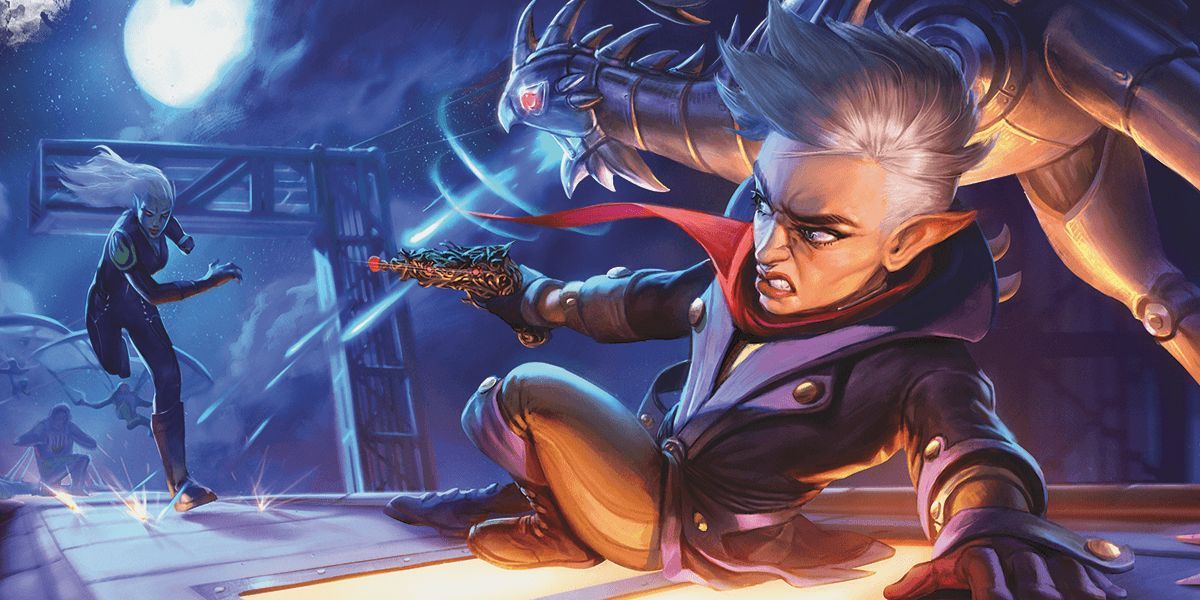
Like in real life, staying on your feet during combat in Dungeons & Dragons is a good idea. That said, there are situations when falling to the ground can't be avoided (sadly, also like in real life.) When knocked to the ground in combat, your D&D character is in the prone condition.
RelatedDungeons & Dragons: The Best Non Cleric Healers
Here are the best non-Cleric healers in D&D!
PostsFalling prone doesn't mean you're out of the fight entirely, but it can put you at a tactical disadvantage for a while. This condition affects everything from movement to attack rolls. Falling prone can put you in a serious jam—especially if enemies surround you. Let's investigate the prone condition in D&D.
What Is The Prone Condition?
Art Via Wizards of The Coast And Renen Assuncao, David EdwardsProne is an interesting condition in D&D combat that simulates the consequences of falling to the ground. There are three main components to the prone condition:
- Movement: Once prone, your only movement option is to crawl (with its extra movement cost, your speed is halved). Alternatively, you can stand up, which costs half your movement speed for that round.
- Attacking: You have disadvantage on Attack rolls while prone.
- Defense: Attackrolls against you have advantage if the attacker is within five feet. Attacks from more than five feet away have disadvantage.
The last rule is what makes prone an interesting tactical choice. Ranged classes and Spellcasters wanting to keep their distance from enemies may find utility for the prone mechanic.
A rogue archer, for example, could attack on their turn and then drop prone to minimize damage from returning enemy fire. On their next turn, they can stand up, fire, and fall back to prone in a single turn (as long as they don't need to move anywhere).
How Do Creatures Become Prone?
Bigby Smash by Hinchel OrA character or creature can fall prone in several ways. You can shove an enemy as your attack if it's no more than one size larger than you. (For characters with multiple attacks, a shove constitutes a single attack.)
You make a Strength (Athletics) check contested by the creature's Strength (Athletics) or Dexterity (Acrobatics). If the enemy fails the check, they fall prone or are knocked back five feet (you should state what you intend before rolling).
Spells like Tasha's Hideous Laughter, Thunderous Smite, and Earth Tremor (to name a few) can knock enemies prone.
Likewise, abilities like the Battle Master's Trip Attack or the Monk's Open Hand Technique can knock enemies to the ground. Druids who attack in wolf form have a chance to knock enemies prone, too.
Why Knock A Creature Prone?
Ochre Jelly by DaarkenKnocking an enemy prone at the right time in the initiative order can achieve a few things. First, it can interrupt magic users concentrating on a spell or about to cast one. Second, knocking an enemy prone can give members of your party an advantage on their next attacks on the target (depending on the initiative order and their proximity to the enemy).
If your character has the Extra Attacks feature, you can use your first attack to knock the target prone. If successful, subsequent attacks have advantage.
Thirdly, once a creature is in the prone condition, you can use Grapple to drop its movement speed to zero. This means the creature can't stand up on its turn, limiting its options and debuffing its next round of actions.
Flying creatures can also be knocked prone, though you might have difficulty shoving them. Fighter Battle Masters can use their Trip Attack with a bow to knock flying enemies prone. The creature will likely take fall damage as it plummets from the air.
Why Choose To Go Prone?
Drow using Steady Aim by Nikki DawesUnlike most other conditions in D&D, prone has some tactical utility. If enemies attack you from range, dropping prone imposes disadvantage on their attack rolls. Going prone has no associated movement cost, unlike standing back up again.
The mechanics of prone mean spellcasters and ranged characters can go prone at the end of their turn tolimit returning fire from enemies. Sure, it'll cost them half their movement speed to stand back up at the start of their next turn, but this is often worth it.
As a DM, you can prevent your players from exploiting the benefits of the prone condition by charging melee enemies at them once they're prone.
No one wants to be on the ground when there's an enemy within five feet, especially if that enemy tries to grapple with them at every opportunity.
NextDungeons & Dragons: How To Homebrew Feats
Because not everyone can be a Grappler.
Posts












